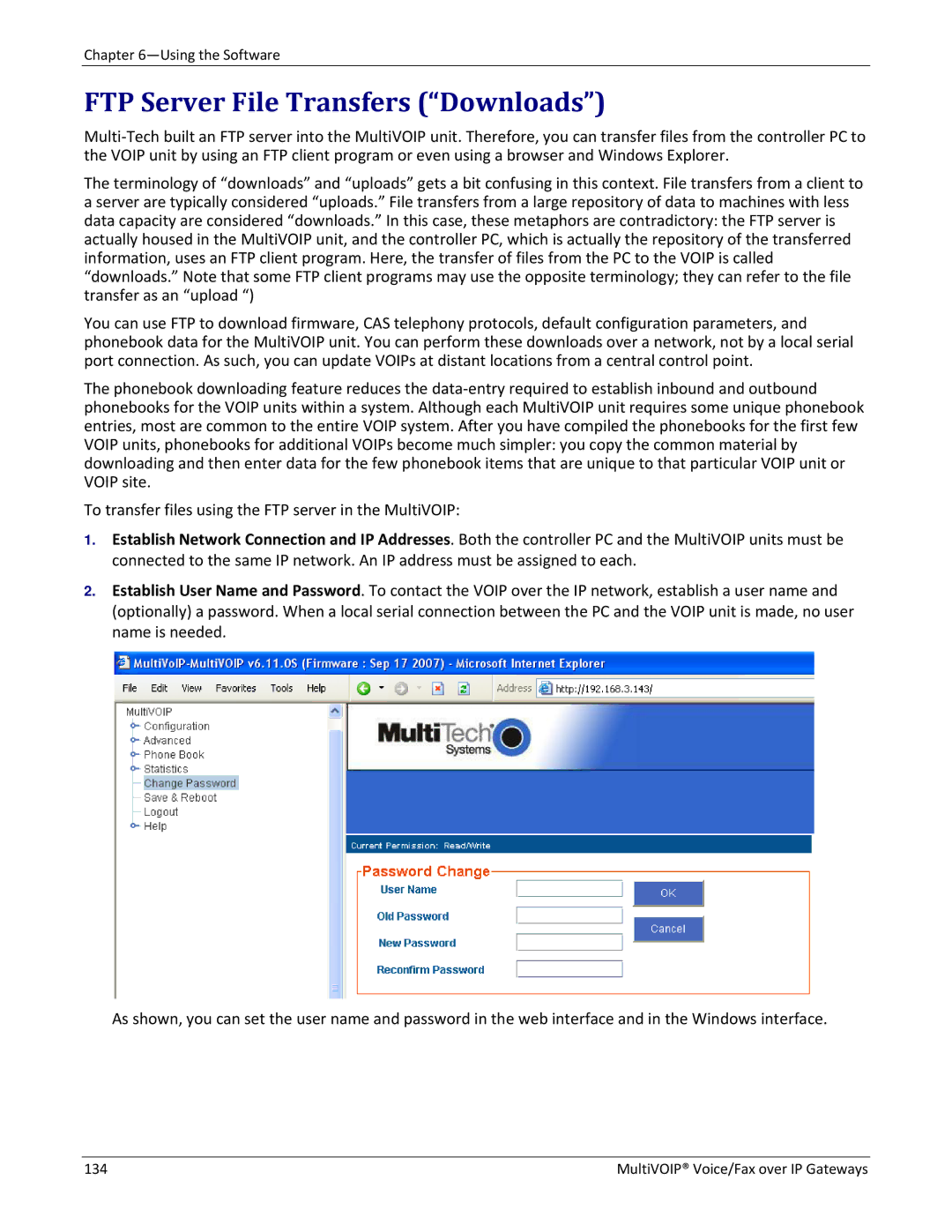
Chapter
FTP Server File Transfers (“Downloads”)
Multi‐Tech built an FTP server into the MultiVOIP unit. Therefore, you can transfer files from the controller PC to the VOIP unit by using an FTP client program or even using a browser and Windows Explorer.
The terminology of “downloads” and “uploads” gets a bit confusing in this context. File transfers from a client to a server are typically considered “uploads.” File transfers from a large repository of data to machines with less data capacity are considered “downloads.” In this case, these metaphors are contradictory: the FTP server is actually housed in the MultiVOIP unit, and the controller PC, which is actually the repository of the transferred information, uses an FTP client program. Here, the transfer of files from the PC to the VOIP is called “downloads.” Note that some FTP client programs may use the opposite terminology; they can refer to the file transfer as an “upload “)
You can use FTP to download firmware, CAS telephony protocols, default configuration parameters, and phonebook data for the MultiVOIP unit. You can perform these downloads over a network, not by a local serial port connection. As such, you can update VOIPs at distant locations from a central control point.
The phonebook downloading feature reduces the data‐entry required to establish inbound and outbound phonebooks for the VOIP units within a system. Although each MultiVOIP unit requires some unique phonebook entries, most are common to the entire VOIP system. After you have compiled the phonebooks for the first few VOIP units, phonebooks for additional VOIPs become much simpler: you copy the common material by downloading and then enter data for the few phonebook items that are unique to that particular VOIP unit or VOIP site.
To transfer files using the FTP server in the MultiVOIP:
1.Establish Network Connection and IP Addresses. Both the controller PC and the MultiVOIP units must be connected to the same IP network. An IP address must be assigned to each.
2.Establish User Name and Password. To contact the VOIP over the IP network, establish a user name and (optionally) a password. When a local serial connection between the PC and the VOIP unit is made, no user name is needed.
As shown, you can set the user name and password in the web interface and in the Windows interface.
134 | MultiVOIP® Voice/Fax over IP Gateways |
